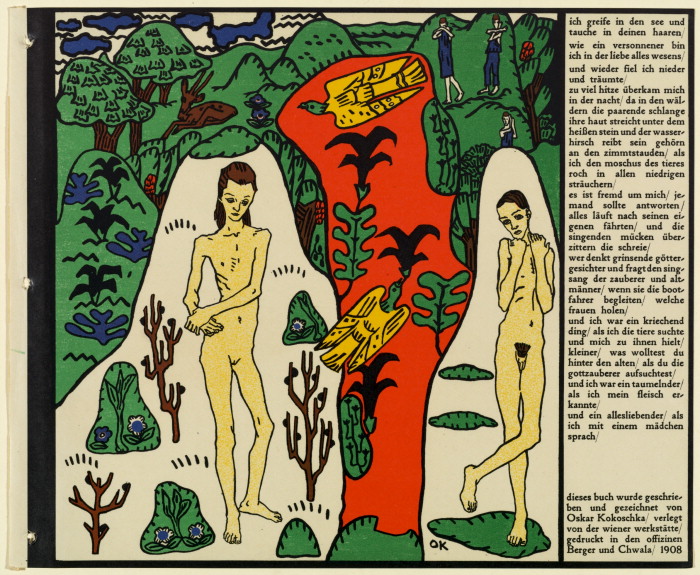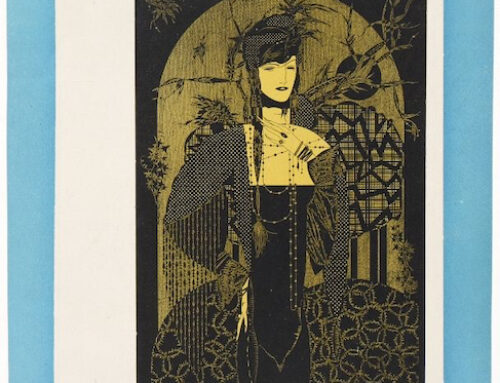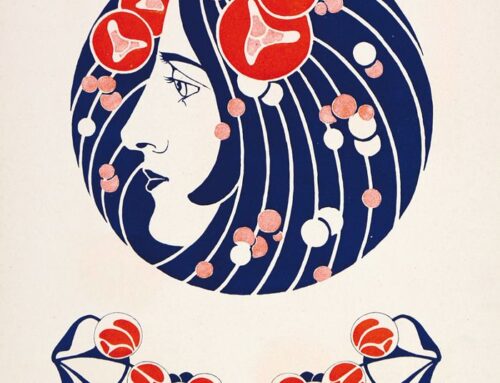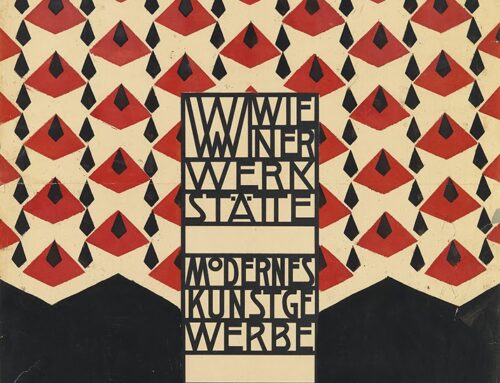On June 2, it will be 108 years since the opening of the 1908 Kunstschau in Vienna- an international art exhibition which introduced Oskar Kokoschka to the Viennese public. On display for the first time was his illustrated book Die träumenden Knaben (The Dreaming Youths)- commissioned by the Wiener Werkstätte a year earlier. The book is now regarded as the one of the first expressionist graphic works at the time, showing the transition from Jugendstil (Germany’s equivalent of art nouveau) to Expressionism in its use of flat plains of vivid colour, angular contours, and blocked fields of space.
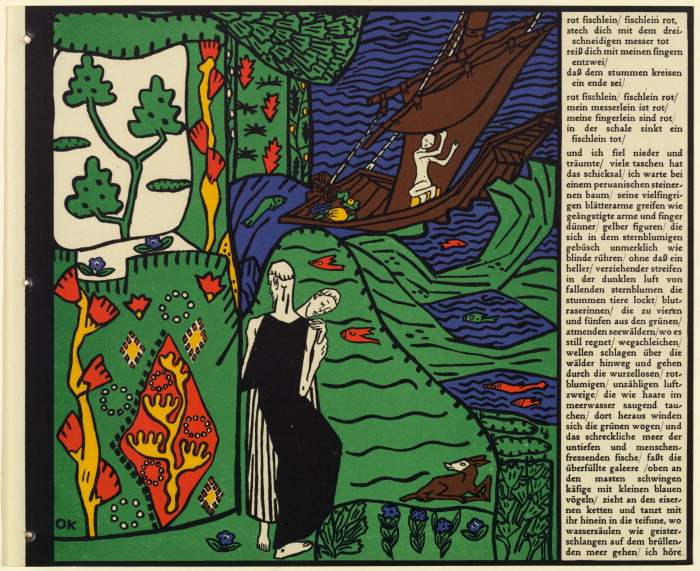
Initially intended as a story-book for children, Kokoschka followed the original brief only to the first page. In the subsequent pages, there follows a stream-of conscious narrative style poem chronicling the story of a young boy and a heroine named Li in a fantastical forest setting. The poem combines symbolist poetry-style of the late 19th century with traditional verse forms of German folk-poems and is accompanied by eight colour lithographs, which don’t seem to correspond to the verses beside them. As the story progresses, the text of the book becomes both inaccessible and inappropriate for children not only on account of its style, but also because of its references to rape and self-mutilation. The Dreaming Youths is a juxtaposition of opposites, where notions of beauty and the grotesque, love and sexual violence, and reality and the subconscious are constantly blurred.
Naturally, the book created a scandal when it was first exhibited at the Kunstschau and Kokoschka’s exhibition room became nicknamed by ‘The chamber of horrors’ by a perplexed and horrified public. Nevertheless, the book launched Kokoschka’s career by attracting the attention of his most ardent supporter and benefactor, the architect Adolf Loos.
Visit this page to read more about The Dreaming Youths.
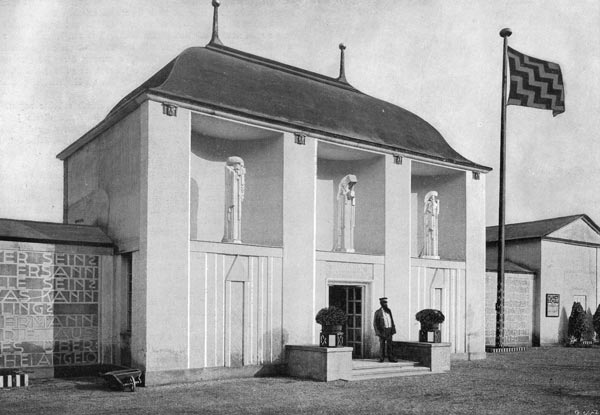
Kunstschau 1908 pavilion, designed by Josef Hoffmann.
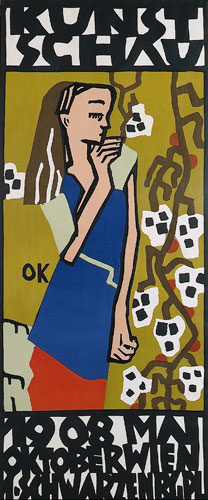
Kokoschka- Poster for The Kunstschau. 1908.


